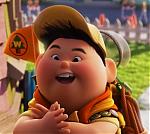So I've been working on learning how to identify edible plants recently. For now I'm focusing on ones found in North America and I know all the easy stuff acorns, black walnuts, hickory nuts, raspberries, blueberries, blackberries, mulberries. The basic ones to start with, I know more than just those but I don't think I need to list all the easy stuff.
Anyway I heard that all aggregate berries in North America are safe to eat though does anyone know if that is true?
I don't have much of a problem with nuts and berries but I want to learn more about edible plants in particular I can identify some like dandelions and cattails but I'd like to learn more about the common edible ones and ones to avoid. Any good places to start?






 Reply With Quote
Reply With Quote





Bookmarks